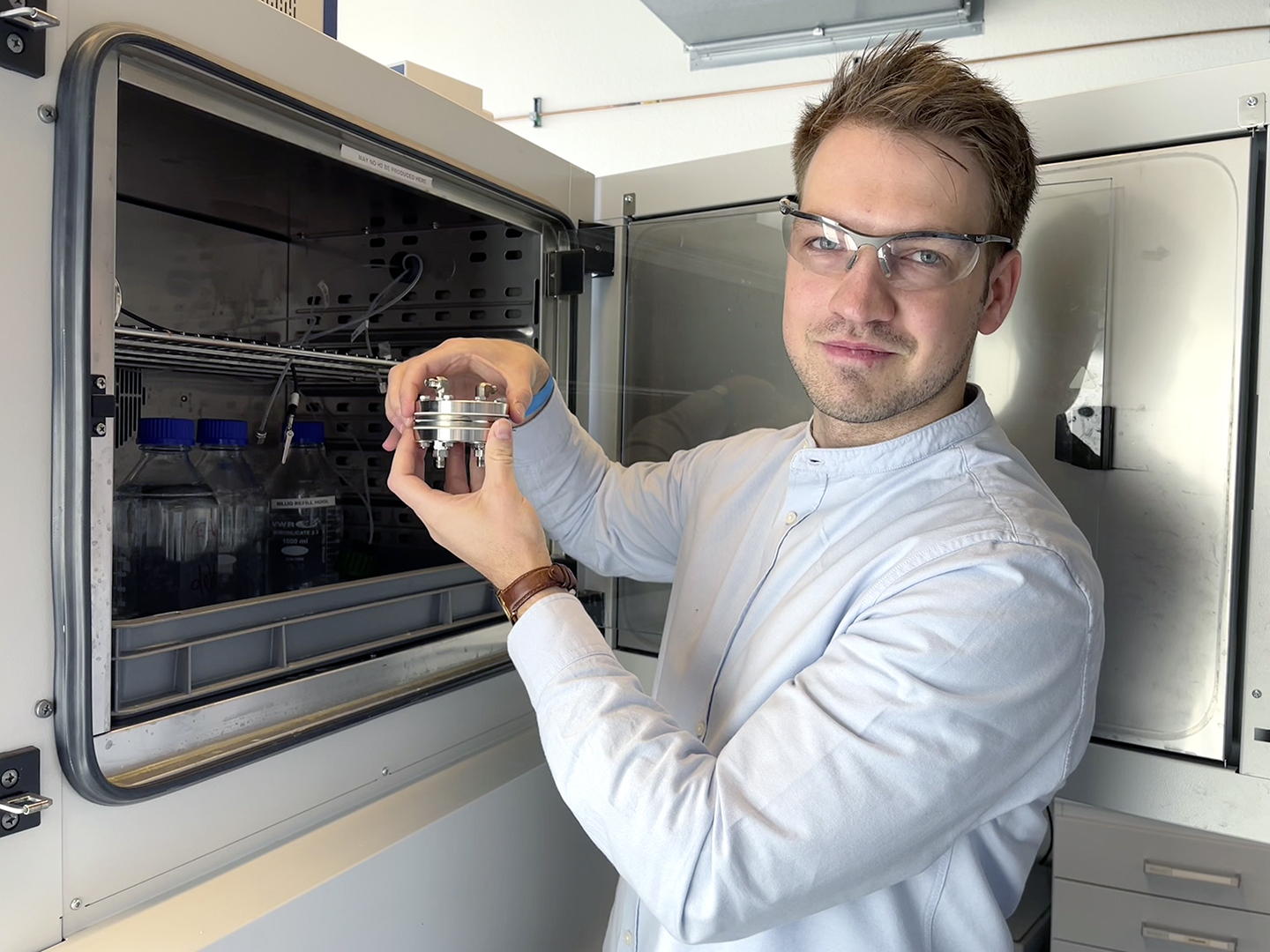CO2 reduction
How to increase the performance of zero-gap electrolyzers
Reducing CO2 in our atmosphere electrochemically and using it as a basis for chemical products – this is the goal of numerous projects in industry and research. The focus is no longer on developing new catalysts and electrodes, but on scalability and optimization of existing electrolytic systems. Scientists from Fraunhofer UMSICHT, Ruhr-Universität Bochum and RWTH Aachen took a closer look at one of these systems – the so-called zero-gap electrolyzer. Result: They were able to improve both the stability of the electrolyzer and the faraday efficiency for the CO produced over a longer period of time.

"Via electrolysis, CO2 can be converted from exhaust gases or the atmosphere into products that are very important for the chemical industry – from carbon monoxide and formic acid to hydrocarbons and alcohols," explains Prof. Dr. Ulf-Peter Apfel from Ruhr-Universität Bochum and Fraunhofer UMSICHT. "With the growing interest of industry in this process, the focus of development work on electrolyzers has also shifted. The concentration is less on designs using liquid electrolytes and more on gas-fed systems such as zero-gap electrolyzers." Their advantage: They are more energy-efficient and better scalable.
Zero-gap electrolyzers use a solid-state electrolyte: a membrane that exchanges ions and is arranged between the cathode and anode. This means that – unlike electrolyzers based on liquid electrolytes – there is no need for a liquid catholyte. Instead, moistened CO2 gas is supplied to the cathode, which provides the necessary protons for CO2 reduction. In addition, because of the close spacing between the electrodes, the ohmic resistance of the overall cell is minimized. "All this results in zero-gap designs achieving high partial current densities as well as high process stability," says Dr. Kai junge Puring from Fraunhofer UMSICHT. "This means that we can convert more CO2 at once and the electrodes also maintain this operation for a longer time."
Still at an early stage: The industrial application of gas-fed electrolyzers for CO2 reduction
Despite these advantages, the industrial application of gas-fed electrolyzers for CO2 reduction is still at an early stage. Especially with regard to process parameters such as cell temperature or compression, there is still a need for research. "This also applies to the assembly of the cells," says Dr. junge Puring. "So far, there is a lack of generally applicable guidance: each group in research and industry dealing with zero-gap electrolyzers must independently determine the optimal efficiency of the cell via trial-and-error in cell and electrolyzer design."
The scientists from Fraunhofer UMSICHT, Ruhr-Universität Bochum and RWTH Aachen started with the topics of cell design and process parameters. Their attention was particularly focused on the effects of different gas supply orientations, the compression of the cell components, and the temperature and humidity of the CO2 gas on the efficiency of CO2 reduction. Objective: "We want to point out key factors in zero-gap systems and thus accelerate the development of catalysts and cell concepts in a more reproducible way," explains Prof. Apfel. "In addition, our work will serve as a starting point to provide guidance on the operating parameters of gas-phase electrolysis."
Water management as a key parameter
Specifically, the scientists were able to improve the CO efficiency within 10 h at a cell voltage of 3 V and 300 mA cm-2 by a factor of three by gradually optimizing an electrolyzer. The faradaic efficiency for CO was increased from 14% to over 60%. Here, water management control was a key parameter, since a high water supply leads to flooding of the electrodes, while lower values decrease the performance of the anion exchange membrane and reduce catalyst wetting. Furthermore, simple changes such as the orientation of the electrolytic cell were shown to have a dramatic effect on its performance.
The researchers documented the path to these results in the article "Hidden Parameters for the Electrochemical CO2 Reduction in Zero-Gap Electrolyzers," which appeared in the open-access journal Cell Report Physical Science. Read it at https://s.fhg.de/rY5.
Last modified:
 Fraunhofer Institute for Environmental, Safety and Energy Technology UMSICHT
Fraunhofer Institute for Environmental, Safety and Energy Technology UMSICHT